I know I said day two would be two parts, but there'll be three instead. Just too many pics!
we next went to a nature conservancy preserve out on the south fork of long island, somewhat near montauk point. there are two populations of a native orchid that seems to have relationships to two other natives, namely platanthera blephariglottis and platanthera cristata. paul brown has described these populations as a new species, platanthera pallida. others say that it is just a brighter version of platanthera cristata. there are strong feelings attached to the many positions. as I am not a taxonomist, I can only take pictures and state my opinions based on my own observations (granted, that many others have had many more observations than I have, but I feel fairly certain to be relatively unbiased other than I like it that calling it platanthera pallida would make it an orchid endemic to new york state! looking at what has been written and using my own judgement, it looks like a population made up of former x canbyi and possibly lots more of each parent mixed in along the way, and is on it's way to being it's own species at some point, or at least a different declared variety or subspecies. I definitely doesn't look like 'just a pale cristata', and from what I've seen of tropical orchids, naming of them and what little can make an orchid a new species or variety, this definitely should have different status than cristata. If this were a cristata habitat, then why aren't there normally-colored cristata growing here or nearby? there are normal cristata growing a few miles to the west, so there should be orange ones here in the dunes, or at least a tremendous color variation between individuals, like seen in hazelton, pa. where blephariglottis and ciliaris are both found, with lots of hybrids of every color variation found in between
looking at what has been written and using my own judgement, it looks like a population made up of former x canbyi and possibly lots more of each parent mixed in along the way, and is on it's way to being it's own species at some point, or at least a different declared variety or subspecies. I definitely doesn't look like 'just a pale cristata', and from what I've seen of tropical orchids, naming of them and what little can make an orchid a new species or variety, this definitely should have different status than cristata. If this were a cristata habitat, then why aren't there normally-colored cristata growing here or nearby? there are normal cristata growing a few miles to the west, so there should be orange ones here in the dunes, or at least a tremendous color variation between individuals, like seen in hazelton, pa. where blephariglottis and ciliaris are both found, with lots of hybrids of every color variation found in between
I'm sure there are as many opinions as there are people, but the bottom line is that they are beautiful orchids that don't care a whit what we call them, as long as we don't dig, bulldoze or pick them
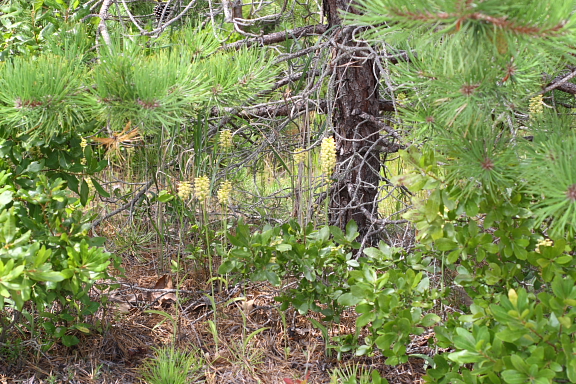
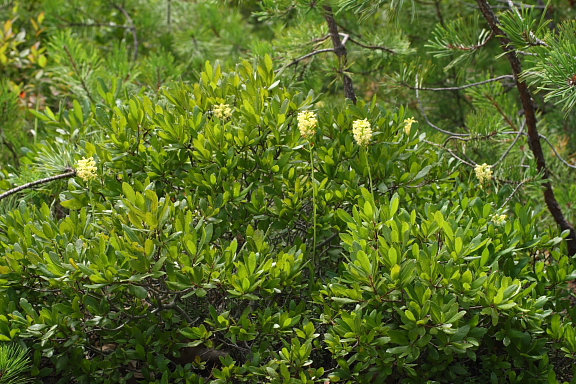
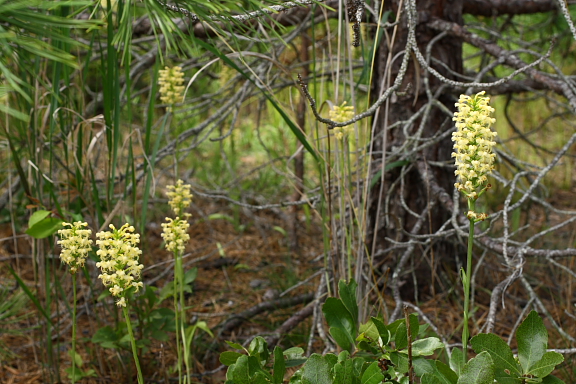
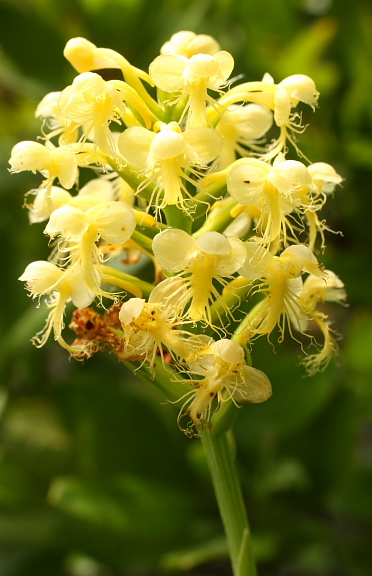
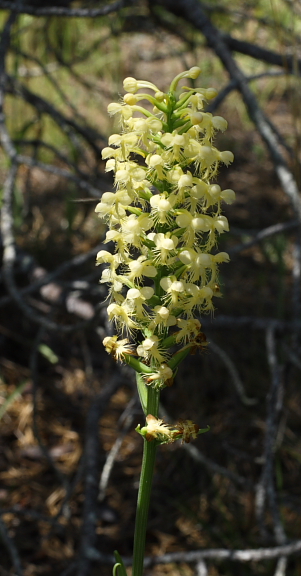
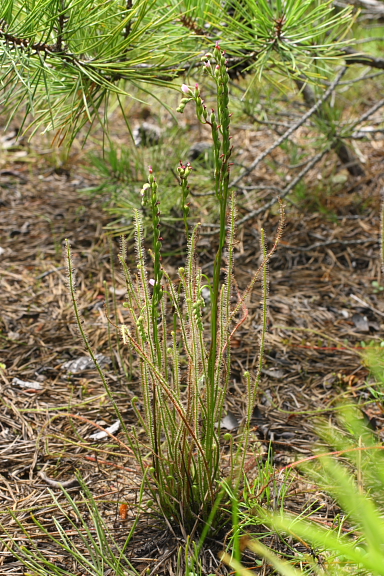
I love this threadleaf sundew, that grows in the lowest spots between the dunes. In this spot, it grows right with the pallida though in other areas there are many pallida but no sundew. There are other sundews here but very tiny.
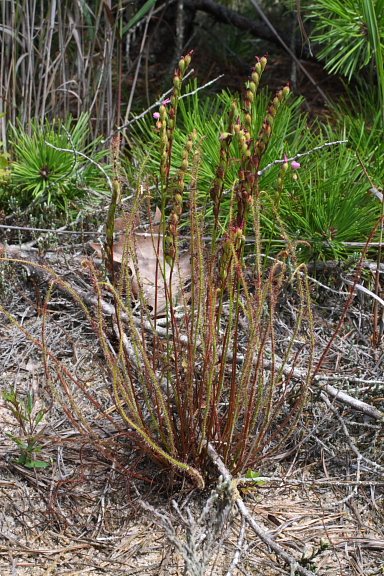
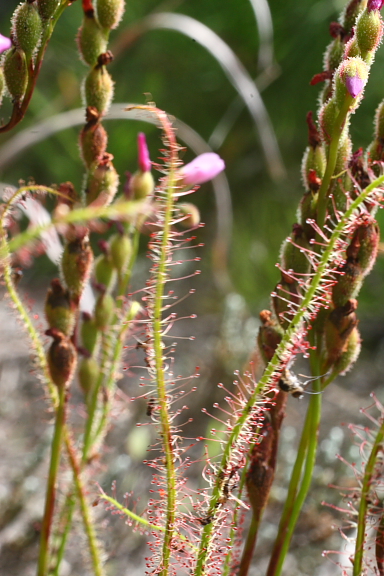
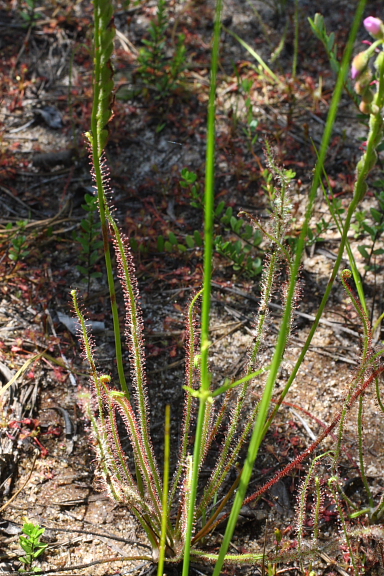
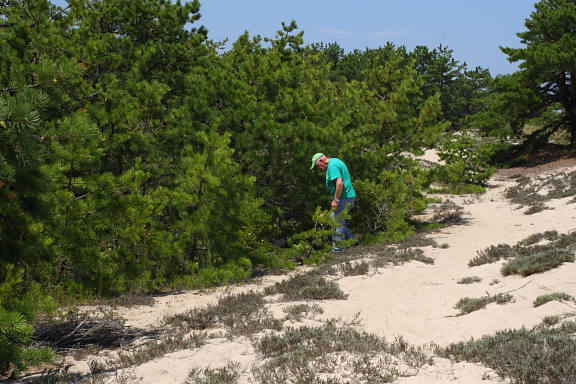
ken surveying some platanthera populations underneath the pitch pines
... and yes, it was very hot and humid there my bug spray was washing off of me minutes after I put it on, and the mosquitos were hovering constantly looking for a weak spot; staying a few yards away from the trees and shade helped a bit plus there was more breeze there
my bug spray was washing off of me minutes after I put it on, and the mosquitos were hovering constantly looking for a weak spot; staying a few yards away from the trees and shade helped a bit plus there was more breeze there
we next went to a nature conservancy preserve out on the south fork of long island, somewhat near montauk point. there are two populations of a native orchid that seems to have relationships to two other natives, namely platanthera blephariglottis and platanthera cristata. paul brown has described these populations as a new species, platanthera pallida. others say that it is just a brighter version of platanthera cristata. there are strong feelings attached to the many positions. as I am not a taxonomist, I can only take pictures and state my opinions based on my own observations (granted, that many others have had many more observations than I have, but I feel fairly certain to be relatively unbiased other than I like it that calling it platanthera pallida would make it an orchid endemic to new york state!
I'm sure there are as many opinions as there are people, but the bottom line is that they are beautiful orchids that don't care a whit what we call them, as long as we don't dig, bulldoze or pick them






I love this threadleaf sundew, that grows in the lowest spots between the dunes. In this spot, it grows right with the pallida though in other areas there are many pallida but no sundew. There are other sundews here but very tiny.




ken surveying some platanthera populations underneath the pitch pines
... and yes, it was very hot and humid there



